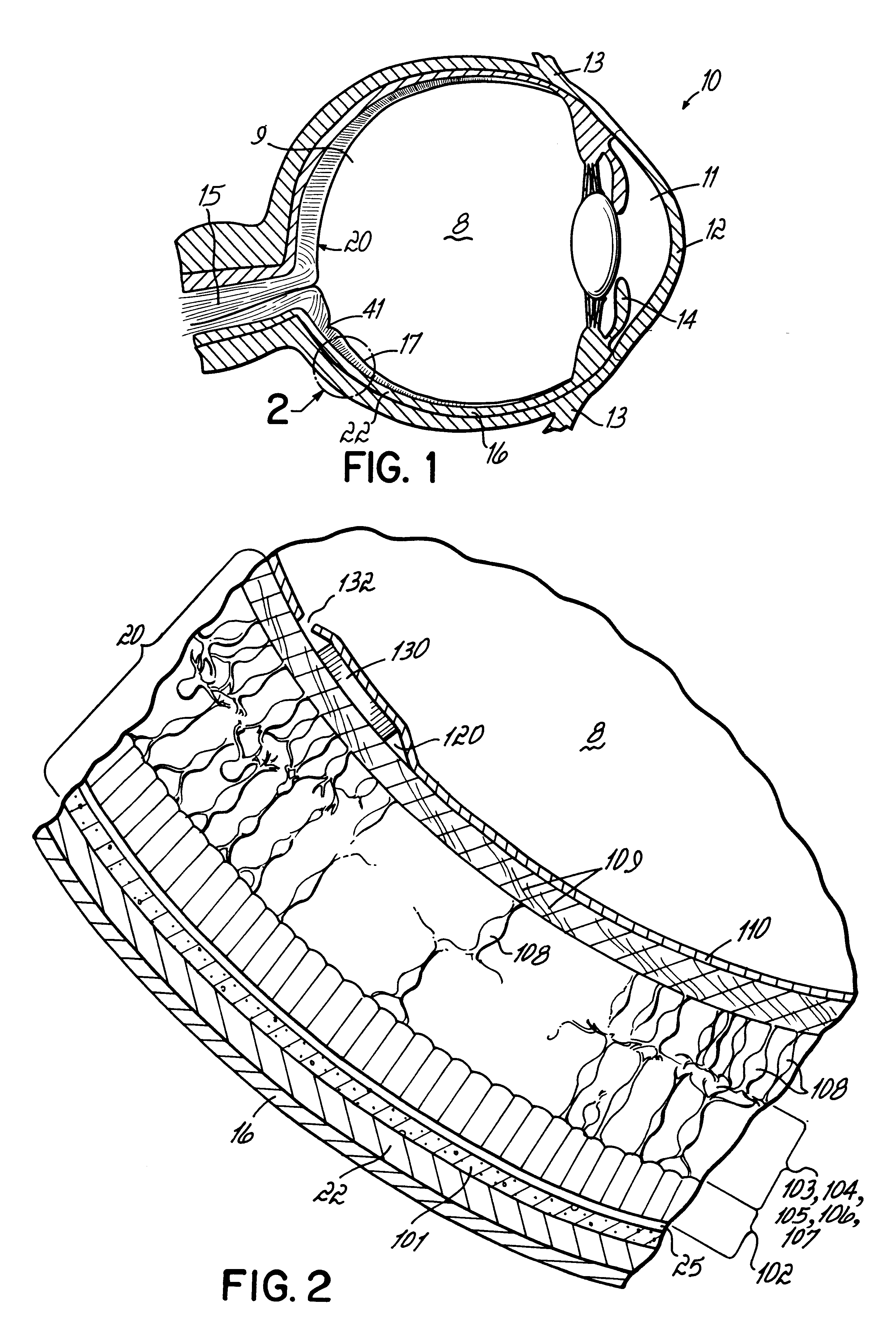Retinal treatment method
a retinal treatment and treatment method technology, applied in the field of retinal treatment methods, can solve the problems of no devices or compositions, and achieve the effects of promoting retinal traction, reducing the distance between the substance and its target, and enhancing the stimulation
- Summary
- Abstract
- Description
- Claims
- Application Information
AI Technical Summary
Benefits of technology
Problems solved by technology
Method used
Image
Examples
Embodiment Construction
[0017]With reference to FIG. 1, a mammalian eye 10 is shown. The locations of the vitreous cavity 8, posterior chamber 9, anterior chamber 11, cornea 12, conjunctiva 13, iris 14, optic nerve 15, sclera 16, macula lutea 17, lens 18, retina 20, ora serrata 21, and choroid 22 are illustrated.
[0018]The most sensitive portion of the retina 20 is the macula lutea 17, which is located in the center of the posterior part of the retina 20. The inner surface of the retina 20, near the border of the optic nerve 15, has a shallow round depression, the fovea 41. The fovea 41 is surrounded by the central area, distinguished by the great number of ganglion cells and by the general refinement and even distribution of the structural elements, especially the rod cells and the cone cells. About one-tenth inch inside the fovea 41 is the point of entrance of the optic nerve 15 and its central artery. At this point, the retina 20 is incomplete and forms the blind spot.
[0019]With reference to FIG. 2, the ...
PUM
| Property | Measurement | Unit |
|---|---|---|
| Cell angle | aaaaa | aaaaa |
| Biocompatibility | aaaaa | aaaaa |
| Light | aaaaa | aaaaa |
Abstract
Description
Claims
Application Information
 Login to View More
Login to View More - R&D
- Intellectual Property
- Life Sciences
- Materials
- Tech Scout
- Unparalleled Data Quality
- Higher Quality Content
- 60% Fewer Hallucinations
Browse by: Latest US Patents, China's latest patents, Technical Efficacy Thesaurus, Application Domain, Technology Topic, Popular Technical Reports.
© 2025 PatSnap. All rights reserved.Legal|Privacy policy|Modern Slavery Act Transparency Statement|Sitemap|About US| Contact US: help@patsnap.com

